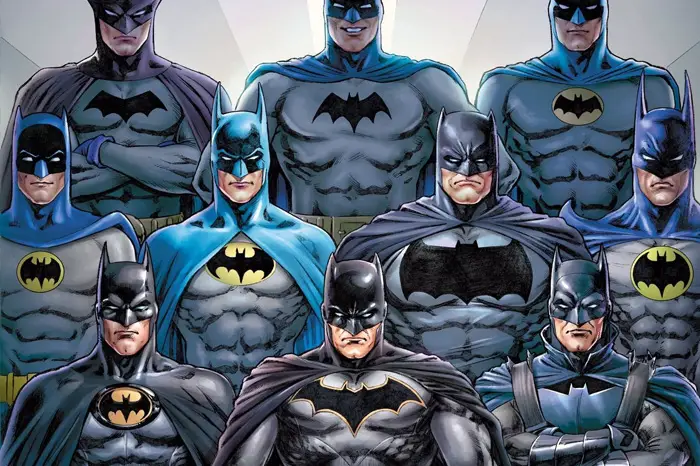 Batman made his debut in Detective Comics #27 (May 1939), in a six-page story called “The Case of the Chemical Syndicate,” which Bill Finger admitted was inspired by a Shadow story. It was a typical pulp murder mystery, but with all the excess verbiage removed (pulp writers were paid by the word, and it usually showed). Bob Kane’s art was crammed into as many as eleven panels per page, and his style was still somewhat hesitant. “Of course the first sketches were very crude, but my drawing developed. Within six issues I elongated [Batman’s] jaw, and I made the ears longer,” said Kane. “I really improved fast. About a year later he was almost the full figure, my mature Batman.”
Batman made his debut in Detective Comics #27 (May 1939), in a six-page story called “The Case of the Chemical Syndicate,” which Bill Finger admitted was inspired by a Shadow story. It was a typical pulp murder mystery, but with all the excess verbiage removed (pulp writers were paid by the word, and it usually showed). Bob Kane’s art was crammed into as many as eleven panels per page, and his style was still somewhat hesitant. “Of course the first sketches were very crude, but my drawing developed. Within six issues I elongated [Batman’s] jaw, and I made the ears longer,” said Kane. “I really improved fast. About a year later he was almost the full figure, my mature Batman.”
“He can’t stop bullets, you know,” Bill Finger said of Batman, and that particular difference between Batman and Superman was demonstrated during “The Batman Meets Doctor Death,” in Detective Comics #29 (July 1939). “Your choice, gentlemen! Tell me! Or I’ll kill you,” Batman threatens a couple of thugs, and seconds later the Caped Crusader gets shot. This third Batman story also introduced the series’ first recurring villain (apparently killed in a fire, Doctor Death returned horribly burned in the next issue), and the hero’s famous utility belt full of crime-stopping gimmicks. The script for this story has been attributed to Finger, but authorship was claimed years later by Gardner Fox, who is always acknowledged to have written the fifth and sixth Batman tales.
Fox would later script such characters as the Flash, Hawkman, Sandman, Dr. Fate, and the Justice Society of America, and his undisputed contributions to Detective Comics #31 and #32 also included some significant events. Batman was provided with a fiancée, Julie Madison (although she was soon forgotten), and with two new weapons. One was a stylized helicopter, “my Batgyro,” as Batman put it, and the other was “the flying Baterang, modeled after the Australian bushman’s boomerang.” So Fox seems to have started the concept of Batman’s ever expanding arsenal, and he also set Batman against the supernatural in this two-issue story. The villain was the Monk, who turned out to be a vampire, so Batman shot the bloodsucker and his sultry concubine with silver bullets. The business with guns was troublesome, and after one more recurrence DC’s editorial staff decided to disarm Batman as far as deadly weapons were concerned, lest youthful fans take arms against a sea of troubles. The use of supernatural events would also be discouraged in the future, perhaps on the grounds that nobody should be scarier than Batman. He was a grim figure in his first years, casually killing criminals, and Bob Kane liked this dark version best-but it was not to last. © 1999 DC Comics

